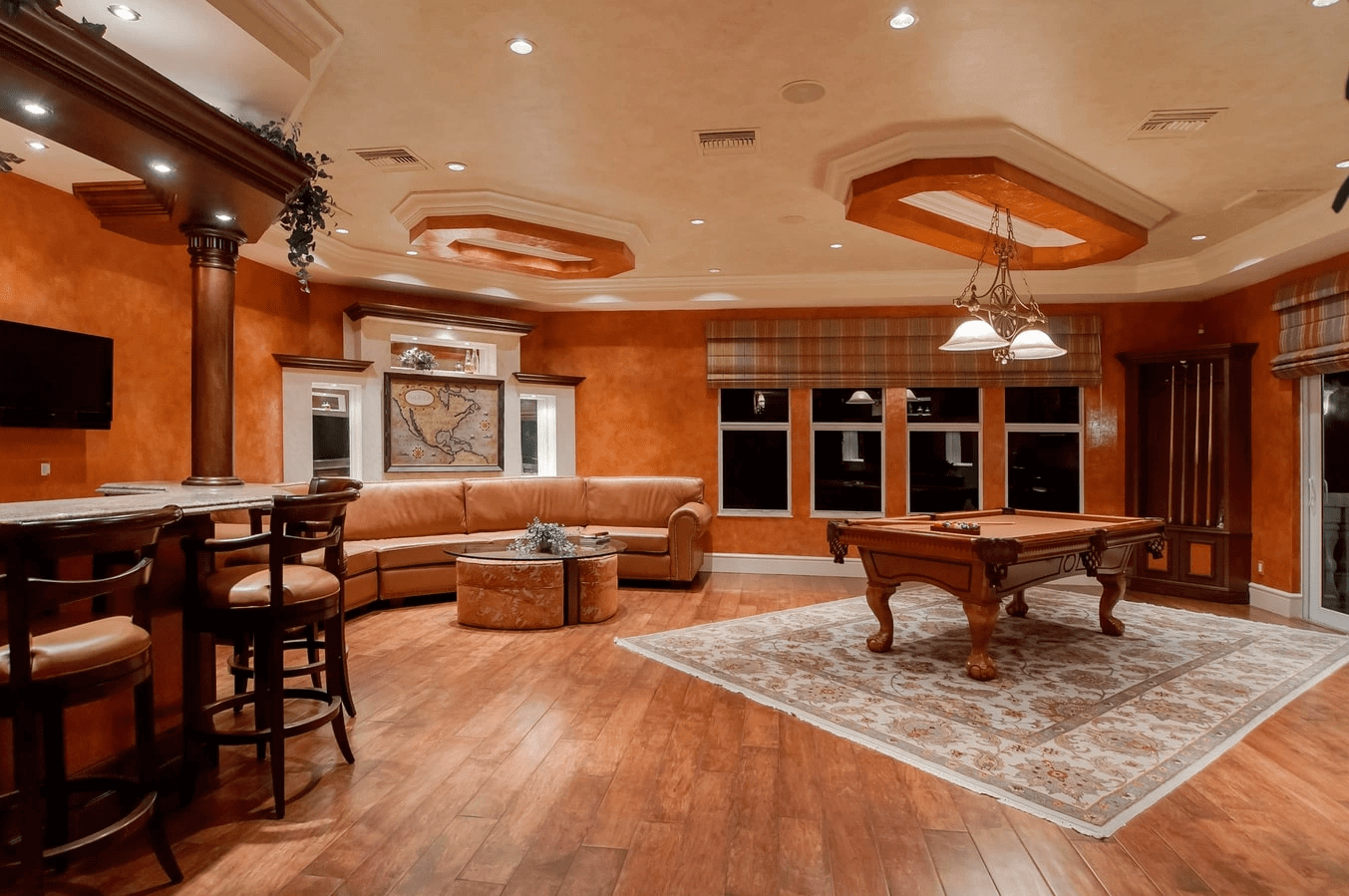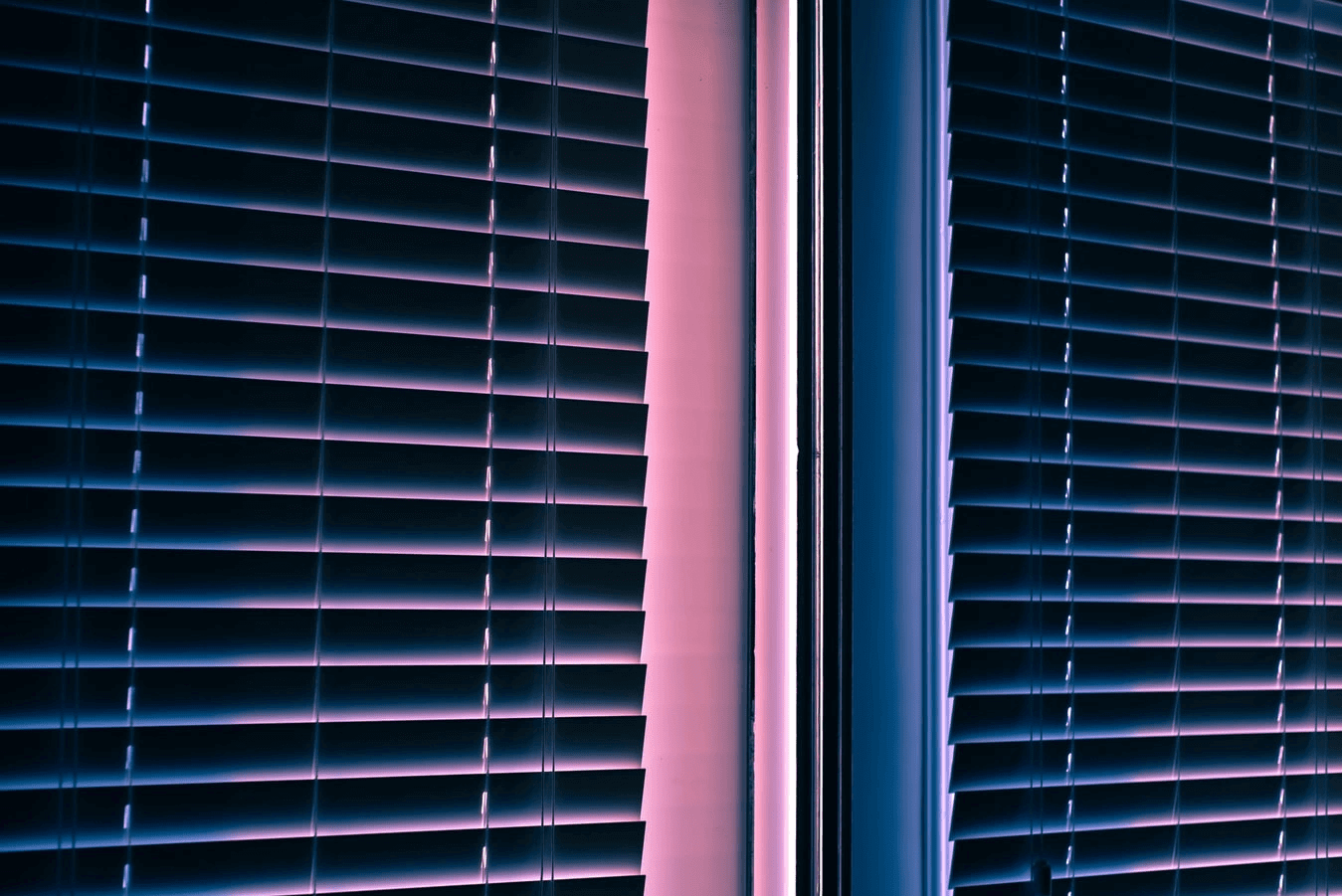How To Reduce Echo In A Room
In the good old days, echoing didn’t seem to be such a big issue for homeowners – wall-to-wall carpeting, upholstered furniture and 8′ ceilings made a big difference in the sound absorption of a space. However, echoing seems to be a common complaint these days and there are a few reasons for this… Here’s what contributes to it and how to reduce echo in a room.
The 4 Main Reasons Why There’s Echo in a Room
1. Wood Flooring

Carpets are often being replaced with wood/laminate/tile/concrete
Carpet absorbs CONSIDERABLY more sound than hard surfaces, particularly on stairs and in rooms with high ceilings.
2.High Ceilings and Open Layouts

Homes are being built with open-layouts and higher than usual ceilings (9’+ to vaulted)
It’s the stadium effect…
3. Leather Furniture

Upholstered furniture is being replaced with leather/vinyl
While leather and vinyl are ‘soft surfaces’ their sound-absorbing features are far different from fabric. And the room above has a double-whammy with vaulted ceilings and leather.
4. Window Coverings

Blinds are being used in place of draperies
Again, fabrics absorb sound, wood and metal do not.
It’s the soft surfaces in your home that absorb the sound waves – the hard surfaces bounce them around worse than double-d’s on a jog. While it’s best to conquer acoustics when your home is being built, it’s most often too late for that (you know, by like 40 or 50 years) so read on my friend!
Here’s a list of items that absorb sound in a room. Adding some of these items to your room can improve the acoustics and reduce echo in the room.
Upholstered Furniture
Furniture that is upholstered in fabric. While it’s okay to have some leather, it’s the fabric pieces that will actually absorb the noise that’s thrown at them, rather than bouncing it back.
Area Rugs
When it comes to area rugs – the bigger it is and the more dense/long the fibre is, the more sound it will absorb. As will wall-to-wall carpeting.
Draperies (floor-length is ideal)
And while these sheers (shown below) won’t absorb as much sound as more thick, dense drapes, they are better than nothing. Combined with the area rug they will definitely help to dampen any noise.
Fabric blinds (such as pleated/cellular)
While PVC or aluminium blinds are more affordable, they will do nothing for the acoustics in a room. Check out pleated, cellular and roman blinds for more sound absorption.
Plants
Best placed in corners to slow down the sound that is bounced off the walls. Even a fake plant can help!
Toss Cushions and Throw Blankets
If you have a leather sofa, adding toss cushions can help absorb some sound. You’ll probably need to add a throw blanket as well, as cushions tend to slide on leather!
Here is a list of items that do not absorb sound in a room and may contribute to echoing…
- Leather (as leather is generally reflective it does not absorb sound)
- Wood/laminate/tile floors
- Walls and ceilings
- Fireplaces
- Mirrors and artwork (unless they’re canvas)
- Wood, metal or glass furniture pieces such as tables/entertainment stands/etc…
- Wicker and plastic
- Doors and windows (windows are one of the worst echo offenders)
- Vaulted ceilings
Other points to ponder to reduce echo in a room – increasing the acoustics…
Solid wood doors are more effective at keeping sound within a room than hollow-core doors Artwork can help on a small-scale if it’s a canvas piece (meaning there is air space behind the artwork) While hard furnishings do not absorb sound – they do help to slow down the sound waves; therefore reducing the echo. Adding bookcases, side tables and other furnishings will ‘help’ with the acoustics in your space Pushing your upholstered furniture against the walls will decrease the wall space that is available for sound to bounce off of as even leather furniture pieces absorb more sound than drywall Do you need help with reducing echo in your home? Schedule a virtual meeting with us now.
Call us 1300 498 268
Email us – enquires@acousticaprojects.com.au
Website – www.acousticaprojects.com.au
